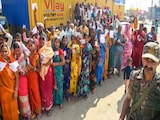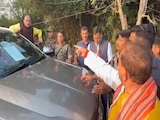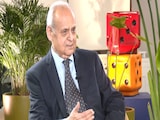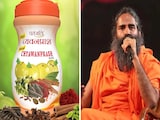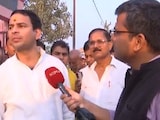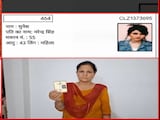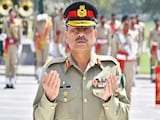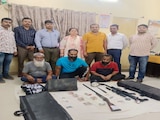After the AMC victory in 1987, Modi planned to take out a series of rallies all over the state. He began with a Nyaya Yatra, rally for justice, aimed at making people aware of their entitlements when the state was reeling under serious drought conditions. He asked party workers to prepare a haqpatra, a list of entitlements, to make farmers aware of their rights. The yatra was planned in such a way as to cover the entire state and ensure that farmers' issues were raised in public meetings. The events provided a platform for a kind of jansunvai, a social audit of the government's relief measures.
In the drought-prone state of Gujarat, there was a long tradition of relief interventions from civil society and from voluntary or philanthropic organizations, but this was the first time, under Modi's coordination, that a political party was reaching out to the affected people. This was also the first time a political party was deploying the 'interventionist methodology' to expand its area of influence. In rural areas people were attracted to this endeavour, which was quite innovative in establishing instant rapport with the masses. Apart from creating a mass following, Modi kept mobilizing the cadres and encouraging them perpetually to connect with the people and their issues. Such programmes were planned even at the micro level, down to talukas and panchayats, to keep the cadre always ready.
Among Modi's innovations in the late '80s was the concept of a chintan baithak, a brainstorming meet, of the top rung of party leaders, which the party later replicated at the national level. The top twenty-five leaders of the state got together in the Gir forest and spent three days - cut off from the media, without access to telephones and even newspapers - to focus solely on their strategy options. The free and frank discussions acknowledged the party's potential, admitted its weaknesses, touched upon the socio-political conditions and delineated ways to strengthen the cadre.
To institutionalize the Gir experiment, Modi formed a standing 'working group' of 25-30 leaders who started meeting every month to review the activities and plan ahead. This also helped in building team spirit in the leadership. Extending this initiative to the cadre at large was the logical next step. Modi and other leaders launched a series of abhyasvarga, or study sessions, across the state, attended by thousands of party workers. The focus was on the party strategy, ideology and the development of the cadre's skills. Another innovative measure taken by the new general secretary (organization) had to do with the new work culture. Modi believed that office-bearers must not take their office for granted and that each office should have fixed tasks. Some of the seniors might have grumbled at the move, but soon an atmosphere of responsibility and accountability emerged.
No doubt, Modi's methods of the organization and expansion were quite unconventional and at variance with the traditional ways. As Harin Pathak put it, the party knew only the traditional method: hold a public meeting of a well-known leader, who would deliver a speech, and the cadres would mobilize people for an event occasionally. Not without reason, the BJP was then considered a party of the Brahmin-Bania, the two leading upper castes that do not have significant numerical strength in Gujarat. Modi's rigorous method of co-opting the marginalized social groups, the newly emerging ('neo') middle class in urban areas and some 60 lakh non-Gujaratis overstretched the party's resources and caused considerable consternation. But Modi continued with his efforts in his role as the general secretary (organization). Along the way, he was also silently preparing for the crucial 1990 state assembly election, in which he aimed to capture the anti-Congress space.
In the state's politics, the key actor in the anti-Congress space ahead of the state election was Chimanbhai Patel. A shrewd veteran, he was enjoying a second innings after quitting the Congress and joining V.P. Singh's anti-corruption movement. The BJP's central leadership decided to forge an alliance with Chimanbhai and his Janata Dal, and also agreed to his demand for more seats, making the BJP a junior partner. Modi was averse to the alliance as he was confident that the BJP would win on its own.
This confidence was based on his efforts to consolidate the initiatives mentioned before and build the party at the ground level. His micro-management of elections included even coining of catchy slogans that could get traction among the people-a novel move in this party. He discovered a painter and coined a slogan, 'Ab toh bus, BhaJaPa (Enough! Now it's time for the BJP).' This slogan once again broke the traditional methods of coining long slogans. For a section of voters, it seemed to convey nothing. But Modi realized that the slogan would find resonance with people who were fed up with the successive Congress regimes in the state. At the same time, the slogan emphasized the distinctiveness of the BJP in the political space.
Now he had to prepare the party machinery to fight elections in partnership with Chimanbhai. Though a stalwart of his time, Chimanbhai came to be known as a wily politician and dubiously earned the epithet of 'Chiman Chor' (Chiman the thief) in his previous stint as the chief minister. In such a setting, Modi decided to introduce a new political idiom that could describe the BJP as being distinctively different from other parties.
But this search for a new idiom was just a beginning. Modi was keen to capture the electorate's mind space before the state assembly election in 1990. He planned a state-wide massive mobilization of the BJP cadre in Ahmedabad. All aspirants for assembly seats in the state were asked to come to Ahmedabad in a vehicle decked up as a rath and decorated with party flags and slogans. Hundreds of vehicles improvised as raths did a round of the state for a week and converged in Ahmedabad on the same day. Here, they were given nothing more than a pep talk on how to ensure the expansion of the party's base and win the election.
Insiders say that this massive show of strength was a brilliant strategy to overawe not only the electorate but also potential allies, who, until then, had underestimated the BJP's popularity. Perhaps the BJP could now successfully demand from the Janata Dal a larger share in the seat adjustment? Since Modi was conscious of the fact that the victory in the Lok Sabha would ensure power to V.P. Singh, he substantially focused on the state election and strategized in an effective manner to win maximum seats.
In the Lok Sabha election of 1989, the BJP entered into an alliance with the Janata Dal at the last moment, agreeing to contest twelve seats, vacating the rest fourteen for V.P. Singh's party. Given the anti-Congress mood after the Bofors scandal, V.P. Singh had emerged as a charismatic leader and became the prime minister, but in Gujarat his party won eleven out of fourteen seats, whereas the BJP won all the twelve seats it had contested. (The Congress was reduced to three seats.) The BJP thus emerged as the number one party-all efforts over the years had borne fruit.
Published with permission of Penguin Random House from 'The Architect Of The New BJP' by Ajay Singh. Order your copy here.
Disclaimer: The author and publisher of the book are solely responsible for the contents of the book or any excerpt derived therefrom. NDTV shall not be responsible or liable for any claims arising from the contents of the book including any claims of defamation, infringement of intellectual property rights or any other right of any third party or of law.
